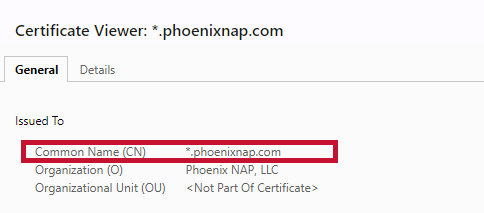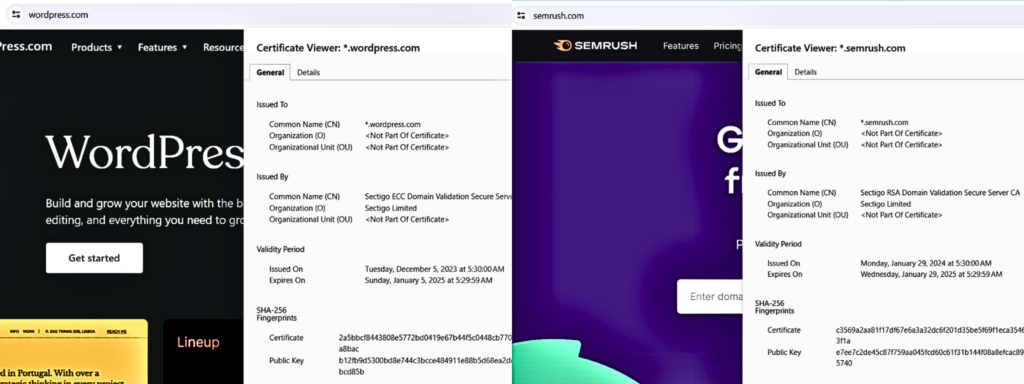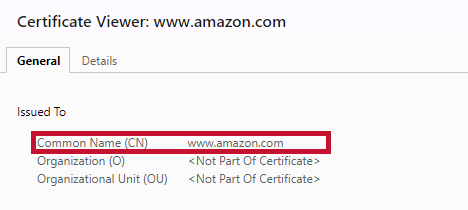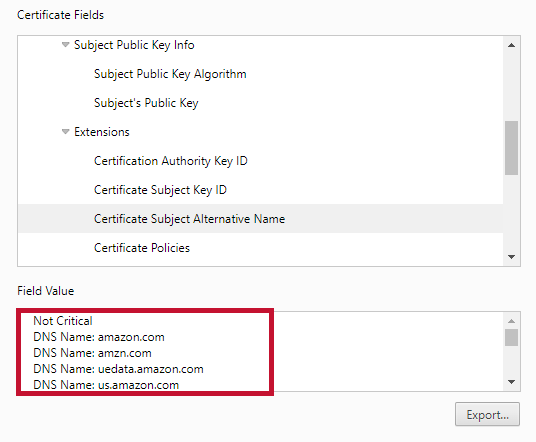Rate this article: 



 (3 votes, average: 5.00)
(3 votes, average: 5.00)




 (3 votes, average: 5.00)
(3 votes, average: 5.00)A wildcard SSL certificate is a powerful tool that encrypts your primary website and virtually unlimited subdomains. Depending on the type of wildcard certificate you get, it can secure some or virtually all of your organization’s online presence, making it an invaluable asset for businesses with numerous subdomains.
This article will explore two wildcard certificate examples to illustrate how they cater to different business uses and applications:
ComodoSSLstore.com has certificates to meet virtually every need and budget regardless of whether you’re looking for one certificate to cover a single domain + unlimited first-level subdomains, or one that covers multiple domains + subdomains on multiple levels.
Wildcard SSL certificate prices start as low as $69.78/year.
SHOP ALL WILDCARD CERTIFICATES
Do you have a wildcard certificate and want to know how to put it to use? Check out our related resource: “How to Use a Wildcard SSL Certificate.”
Whether you’re operating an e-commerce platform, a customer service portal, or an internal communication system, understanding the right wildcard SSL certificate for your setup is not just important; it’s practical.
You have two main categories of wildcard SSL certificates to choose from that are divided by what they cover:
A single-domain wildcard SSL certificate secures your primary domain along with a single level of virtually unlimited subdomains. What we mean by this is that you can use a basic wildcard SSL certificate to cover first-level subdomains, second-level subdomains, or third-level subdomains.
However, you can’t use a single certificate to secure multiple levels of subdomains simultaneously. It just won’t work because that’s not what it’s designed to do. You’d have to use multiple certificates, one to secure each level.
For example, to secure first-level subdomains, use the asterisk symbol (*) before your main domain (*.mydomain.com) in the Common Name (CN) field of the basic wildcard certificate. This ensures that the certificate applies to any subdomain that fits the pattern, for example, first-level subdomains like products.mydomain.com, blog.mydomain.com, and support.mydomain.com.

The primary domain (e.g., mydomain.com) is also set as a Subject Alternative Name (SAN) field on the certificate as well, as shown below:

One certificate, all subdomains. Secure your main domain and first-level subdomains with ease with prices starting as low as $69.87/year.
GET A BASIC WILDCARD CERTIFICATE

Image caption: An example of two wildcard SSL certificates in action, identifiable by the asterisk (*) at the start of each wildcard domain common name: *.wordPress.com, *.semrush.com, etc. This approach ensures security for both sites’ first-level subdomains.
Scenario: Your primary domain, mydomain.com, hosts several services, each on its own first-level subdomain that you wish to secure.
Common Name (CN) field: You set it to *.mydomain.com
Examples of covered first-level subdomains:
Using a wildcard SSL certificate, represented by *.mydomain.com, automatically encrypts all first-level subdomains of mydomain.com.
This approach reduces the complexity for the domain owner, enabling them to secure virtually unlimited subdomains under a single certificate. This ensures simpler and more cost-effective certificate lifecycle management.
Sure, you could use a single-domain wildcard SSL certificate to secure your domain + first-level subdomains. But to secure your second-level subdomains, you’d either have to:
Basically, each subdomain level requires its own basic wildcard certificate or a multi-domain certificate to cover all of them using SANs.
Multi-domain wildcard SSL certificates are more complex and comprehensive than their basic wildcard SSL counterparts. These certificates are well-suited for securing multiple domains and their subdomains (across multiple levels) with a single certificate. They can secure up to 250 domains (using SANs) and unlimited subdomains, offering a cost-effective and efficient solution for managing a broad web presence.
NOTE: The CN must be a fully qualified domain name (FQDN) for multi-domain wildcard certificates. The CN can’t be a wildcard domain. So, for example, you’d set the CN as mydomain.com instead of *.mydomain.com. Here’s an example of how that looks that we captured from Amazon.com:

A multi-domain wildcard certificate is a clear example of a solution that’s beneficial for organizations that manage multiple domains with numerous subdomains under each. But did you know that multi-domain wildcard SSL certificates also go by a couple of other names?
Let’s be frank: the naming conventions for SSL/TLS certificates can be a bit confusing. This is especially true for certificates that cover wildcard domains in some capacity. For example, there are multi-domain wildcard certificates, UCC wildcard certificates, and SAN wildcard certificates. But what are the differences between them?
When you see certificates labeled as “SAN wildcards,” “multi-domain wildcards” or “UCC wildcards,” they’re essentially the same because they allow multiple domain names and wildcard subdomains to be secured using a single SSL certificate.
Once upon a time, UCC (Unified Communications Certificate) wildcard SSL certificates were specifically for businesses that used unified communications platforms (i.e., Microsoft Exchange or Office Communications server). Nowadays, however, UCC wildcard certificates can be deployed in most server environments. This is why, for all intents and purposes, they’re essentially just another name for multi-domain (SAN) wildcard certificates.
Scenario: You manage several domains (mydomain.com, mydomain1.com, and mydomain2.net), each hosting various services, and want to secure those domains along with their first- and second-level subdomains.
Common name (CN) field: You set it to mydomain.com
Examples of separate SANs to cover alt domains and first- and second-level subdomains:
Here’s a multi-domain wildcard certificate example of the SAN field values listed for Amazon.com:

Examples of What Would Be Covered By This Certificate:
The above configuration offers extensive security coverage for a range of domains and their associated subdomains at both the first and second levels. As such, this certificate is an ideal choice for businesses that operate multiple service platforms across various domain names.
Simplify managing SSL/TLS certificates across all of your domains and their subdomains with a single solution. Prices start as low as $156.02/year.
SECURE MULTIPLE DOMAINS NOW
| Feature | Single-Domain Wildcard SSL | Multi-Domain/SAN/UCC Wildcard SSL |
| What It Covers | Secures your primary domain and unlimited subdomains using a single certificate. | Secures your main domain (using the CN and a SAN) and multiple domains (using SANs) with virtually unlimited subdomains under one certificate. |
| Validation Levels | Offers domain validation (DV) and organization validation (OV). EV SSL certificates are not available for wildcard subdomains. | Provides DV and OV options. Extended validation (EV) isn’t available due to the nature of wildcard coverage. |
| Ideal Organizations | Businesses that require a streamlined approach to secure many single-level subdomains for a single domain. | Organizations that want to streamline the management of certificates for multiple domains and numerous subdomains. |
As we conclude our exploration of wildcard SSL certificate examples, it’s clear that these versatile digital security tools are essential for businesses seeking streamlined protection. With the capability to secure an entire suite of subdomains under one umbrella file, a multi-domain wildcard certificate offers a pragmatic and efficient approach to safeguarding your online presence.
For those managing complex web infrastructures or unified communications systems, Comodo’s basic and multi-domain wildcard SSL certificates provide a range of strategic solutions. Want to enable domain and multi-level subdomain coverage under one certificate? Look no further and check out Comodo SSL’s wide selection of wildcard SSL certificates.
Whether you’re securing a few subdomains or an enterprise-level range of sites, we have the certificate for you at a price that makes sense. Wildcard SSL certificates start as low as $69.78 per year.
COMPARE WILDCARD SSL CERTIFICATES